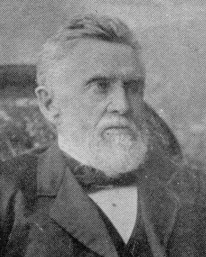

![]()
|
|
|
JOHN HOSSACK
|
THE JIM GRAY CASE The following report of the Jim Gray case is transcribed from Ottawa: Old and New, A Complete History of Ottawa, Illinois published by The Republican-Times, Ottawa, Illinois, 1912-1914. The account is from the contemporary newspaper report. The Case of Jim Gray.
Jailor Albright started north with the negro, but on the way to Ottawa he was overtaken by the negro’s master, who demanded Gray on a writ issued by the United States Commissioner at Springfield. Albright did not want to resist the Government, still he wanted to obey the Supreme Court of Illinois. He was helped out of his difficulty by a United States Marshal, who deputized him, and thus he held the negro under both writs. Judge Caton freed the negro from arrest by the state, but he still remained a prisoner of the government. The little spark that had been kindled by the Berkley case had by this time grown into a flame. The ablest lawyers in the city -- E. S. Leland, Burton C. Cook, O. C. Gray and J. O. Lover -- volunteered their services to defend the negro. Julius Avery was the prosecutor. But the law was all on one side, and Judge Caton ordered the negro to be taken before the United States Commissioner at Springfield. It is believed that the Judge feared an uprising of the people, for he took to occasion to remark that he hoped he lived in a law abiding community. So believing, he had had the negro brought to Ottawa for trial, but should any attempt be made to set the law at defiance he would never again try a similar case in this city. While the case was being tried the anti-slavery people on the outside were not idle. They formed plans to rescue Gray. When the Judge announced his decision James Stout, a lawyer and an ardent Abolitionist, sprang up on a bench and shouted: "Gentlemen, I move that this meeting resolve itself into a committee to carry out the law." The marshal started for the door, holding the negro by the arm. The people who purposely filled the aisle stood back on each side, making a clear passage for the door. Several men seized the marshal and the negro was released. He was grabbed by John Hossack and dragged down the aisle and out of the building, the crowd inside having surrounded the marshal in order to prevent pursuit.
Arrests Follow. Of course the men who engineered this daring rescue of Gray got into trouble. Eight persons were indicted by the United States grand jury. Two left for parts unknown; six were taken into custody. They were John Hossack, Dr. Joseph Stout, Claudius B. King, James Stout, Hervey King, and E. W. Chamberlin. While waiting for a train to Chicago a large crowd assembled at the depot and speeches were made by Burton C. Cook, Brunson Murray, and Rev. G. W. Bassett. Feeling themselves martyrs the prisoners refused bail. They were confined in the debtors’ department of the Cook county jail. Then came the trials. Judge Drummond was on the bench, attorneys Burton C. Cook, Isaac N. Arnold, Jo Knox and Messrs. Larned (http://www.enteract.com/~litclub/EVEN1.HTM) and Goodwin appeared for the defense. District Attorney Fitch (click for source for Mr. Fitch's arguments) and Judge Arrington represented the government. John Hossack was fined $100 and sentenced to ten days in jail; Dr. Joseph Stout at his second trial (the jury disagreed in the first trial) received a similar punishment; James Stout was acquitted and Claudius B. King pleaded guilty and was fined $10 and given one day in jail. John Hossack’s Speech. When asked by Judge Drummond whether he had anything to say as to why he should not be sentenced Mr. Hossack delivered one of the most remarkable addresses ever heard in a court-house. [See the Memorial Book page for complete text]. (It was published as an anti-slavery tract by the American Anti Slavery Society.) While Mr. Hossack and Dr. Stout were serving their ten day’s sentence they were the heroes of Chicago. Mayor John Wentworth and other prominent citizens took the prisoners out riding every day and banquets were given in their honor. Their only guard was Mrs. Jailor Foltz.
|
|
|